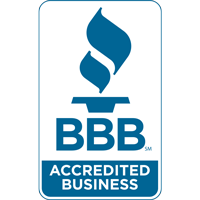
Ceiling fans are one of the most overlooked ways to enhance comfort and cut energy costs. By enhancing air circulation and working in conjunction with your HVAC system, ceiling fans and energy efficiency are truly a natural pairing. They offer a practical, cost-saving way to keep cool while reducing strain on your AC—potentially sparing you from unnecessary air conditioning repair.
In this blog, the experts at Superior Air Repair discuss how ceiling fans can improve your comfort while lowering your energy use with higher HVAC efficiency. We'll also offer some HVAC efficiency tips that make the most of ceiling fans.
Comfort vs. Temperature: The Effect of the Wind-Chill Effect Indoors
Ceiling fans don’t actually change the room’s temperature—they make you feel cooler by moving air over your skin. This is known as the wind-chill effect, and it can make a room feel up to 4 degrees cooler without touching the thermostat. That means you feel less hot and enjoy the benefits of indoor air circulation from your ceiling fan while minimizing air conditioner use—helping reduce your electric bill in summer.
The Best of Both: Advantages of Pairing Fans and Air Conditioning Together
There are several advantages to using ceiling fans and air conditioning in tandem, especially during the warmer months. By using both, you increase HVAC efficiency and maintain a comfortable indoor temperature with less work from your cooling system.
Benefits of using ceiling fans and AC together:
- Ceiling fans help lower HVAC load by moving cool air more evenly throughout the room. Decreasing HVAC stress is important, because it can prevent a breakdown that may result in premature AC or furnace installation.
- Using ceiling fans boosts the comfort level of your home by eliminating hot spots and enhancing circulation.
- Combining ceiling fans and AC can lower your utility usage. If you have a home automation system, you can even fine-tune your smart thermostat settings to bump up the temp a few degrees while your ceiling fan is running.
Clockwise vs. Counterclockwise Ceiling Fan Rotation: Which is the Correct Direction?
To maximize the benefits of your ceiling fans year-round, it’s important to set the blades to rotate in the proper direction for the season. The direction affects how air circulates, which can either make you feel cooler or push warm air downward so you feel warmer.
When to spin ceiling fans counterclockwise
In the summer, ceiling fans should spin counterclockwise at a higher speed. This creates a breeze that pushes cool air downward, increasing the wind-chill effect and making you feel cooler.
When it's best to spin ceiling fans clockwise
In the winter, set your fan to turn clockwise on a slower speed. This lifts cooler air and draws warm air downward from the ceiling, making the space feel cozier without adjusting your thermostat.
What Type of Ceiling Fan Is Best
Selecting the right ceiling fan depends on a few critical considerations, such as blade design, airflow rating and room dimensions. First, look for fans that have a good combination of ECFM airflow and blade pitch to ensure efficient air movement in your home:
- ECFM refers to the amount of air a fan pushes—the cubic feet per minute, or CFM—per watt of electricity it uses. Fans with higher ECFM are more energy efficient.
- Blade pitch refers to the incline of the blades. A sharper blade pitch moves more air but can also strain the motor.
Also, consider room size when sizing a ceiling fan—a fan that’s too small won’t move enough air, while one that’s too large may be disruptive in a smaller room.
Raise Your HVAC Efficiency With the Team from Superior Air Repair
At Superior Air Repair, our HVAC technicians can help you stay comfortable while reducing strain on your heating and cooling systems. From efficient ceiling fan strategies and air conditioning installation to smart thermostats and furnace repair, we offer comprehensive solutions that fit your lifestyle. Set up your appointment by calling 979-200-6326 today.



